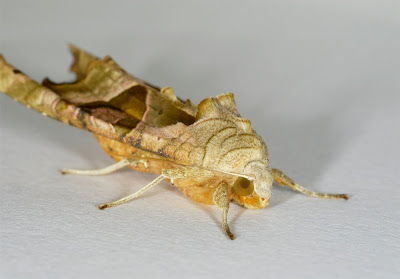Status: Common over most of UK, more local in Scotland (it is commonest in the south-west).
'Rotten Chopped-wood'
(Axylia = chopped wood: Latin, putris = rotten: Latin).
The delicate colouration of this little moth, its habit of resting with its wings held close to its body and the pale colouration on the front of its head, enable it to perfectly mimic a snapped twig. Linnaeus refers to this camouflage technique in his very descriptive choice of scientific name.


Flight Period: June to July. Sometimes a partial second generation in autumn.
Foodplants: a variety of herbaceous plants including Stinging Nettle and Bedstraw.

















